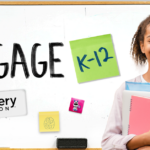By Cynthia Curry
A staple of educational equality for decades, accessibility of learning materials and technologies has increasingly been catching the attention of education stakeholders on both sides of the marketplace. The process has exposed multiple perspectives of what accessibility means, who requires it, and how the responsibility of education agencies is met.
Fortuitously, this emergence of awareness converges at a time that (a) the education product marketplace is showing a response to the need for accessibility and (b) prime technical assistance is available from organizations that have long been working to increase both the availability and use of accessible educational materials and technologies. This is an opportunity to make significant progress in advancing provision systems, thereby improving the independence, participation, and progress of all learners.
In the pursuit of seeking understanding, accessibility has taken on various meanings by both developers and educators
The Office for Civil Rights (OCR) at the U.S. Department of Education defines accessibility as meaning “when a person with a disability is afforded the opportunity to acquire the same information, engage in the same interactions, and enjoy the same services as a person without a disability in an equally integrated and equally effective manner, with substantially equivalent ease of use.”
Key phrases are “equally integrated,” “equally effective,” and “substantially equivalent ease of use.” This definition sets a bar that guarantees students with disabilities are provided with curriculum materials in necessary formats and technologies with appropriate features in a timely manner. The widely accepted definition of timely manner is “at the same time as students without disabilities.”
The unfortunate truth is that many education agencies learn the definition of accessibility as a result of being introduced to the OCR through the process of litigation. You’ll find the definition in all of OCR’s settlements with states and districts that have received complaints about inaccessibility from students or their families.
While the target of K-12 litigation has primarily been the inaccessibility of agencies’ public-facing websites, higher education cases have involved complaints of digital inaccessibility closer to the point of student learning, such as videos without closed captions, third party internet-based applications that are inaccessible to screen readers, and clickers that aren’t usable by students who are blind or have physical disabilities. The settlements are also consistent in the range of actions that the parties agree to in the interest of voluntarily resolution. Examples are agreeing to conduct accessibility audits, create new accessibility policies, implement related procedures, conduct training for faculty and staff, and hire or designate an accessibility specialist.
While the shadow of litigation is an undeniable factor in educational stakeholder attention to accessibility, a societal shift in how disability is perceived has had its own impact.
- Instructional practices that address the capacity of all students to learn are replacing deficit-oriented models of teaching and learning.
- Research has produced curriculum frameworks that address learner variability.
Universal Design for Learning (UDL)
An example is Universal Design for Learning (UDL), which guides the design of instructional goals, assessments, methods, and materials that can be customized and adjusted to meet individual needs. Educators that have adopted such frameworks know the curriculum will fail if students with disabilities can’t participate because the materials provided to them aren’t equally effective or equally integrated and are without substantially equivalent ease of use. Success depends on the availability of educational materials and technologies that all students can access and use for learning.
Many developers are responding by either already marketing products that meet accessibility standards or learning how to do that. The best way to acquire accessible learning materials and technologies is to be purposeful in your procurement practices. Start by requiring that all materials and technologies purchased by your agency be accessible. This is a necessary stance to prevent barriers to learning. Incorporate accessibility into your purchasing policies and practices, including conformance with Section 508/WCAG 2.0 AA. Include accessibility language in contracts and purchase orders.
The National Center on Accessible Educational Materials for Learning (AEM Center) has sample language for both print and digital materials. Ask for Voluntary Product Accessibility Templates (VPAT). The VPAT is a tool for vendors to self-report the accessibility of their products. While the VPAT should not be the sole source of product accessibility data, it can be used in combination with other purchasing strategies to gather information.
Finally, recruit students to be product testers.
The greater the learner variability among the students in your testing group, the better. For example, students who use assistive technology will not only be able to demonstrate the product’s interoperability with their devices or software, they can also provide feedback on their unique user experience.
The promise of accessible materials and technologies has never been greater for learners who need them. Standards, guidance, and technical assistance are accompanied by an increasingly dominant ethos that all kids can learn when provided with the curriculum and materials that enable them to do so. States and districts can take advantage of the moment by self-assessing their procurement practices and taking the first steps toward including accessibility.
Cynthia Curry is the Director of the National Center on Accessible Educational Materials for Learning
The American Consortium for Equity in Education, publisher of the "Equity & Access" journal, celebrates and connects the educators, associations, community partners and industry leaders who are working to solve problems and create a more equitable environment for historically underserved pre K-12 students throughout the United States.
- American Consortium for Equity in Educationhttps://ace-ed.org/author/admin/
- American Consortium for Equity in Educationhttps://ace-ed.org/author/admin/April 23, 2025
- American Consortium for Equity in Educationhttps://ace-ed.org/author/admin/
- American Consortium for Equity in Educationhttps://ace-ed.org/author/admin/







